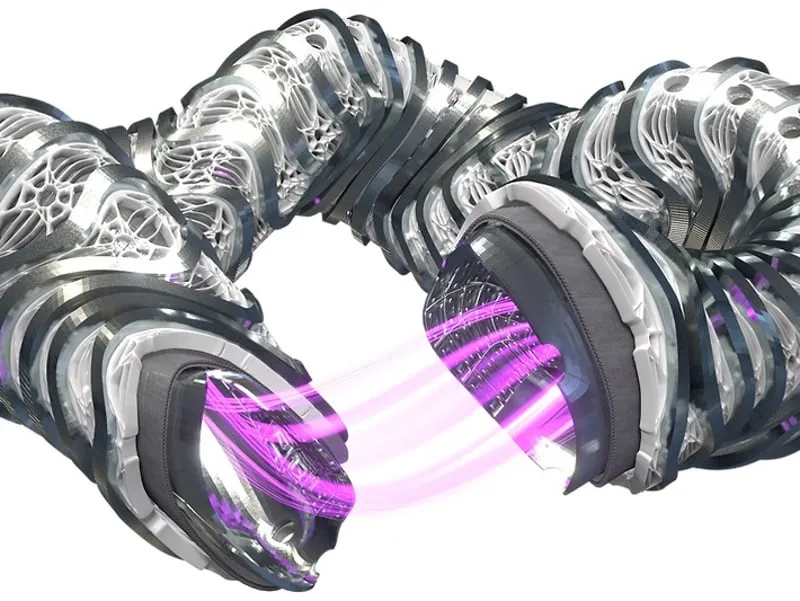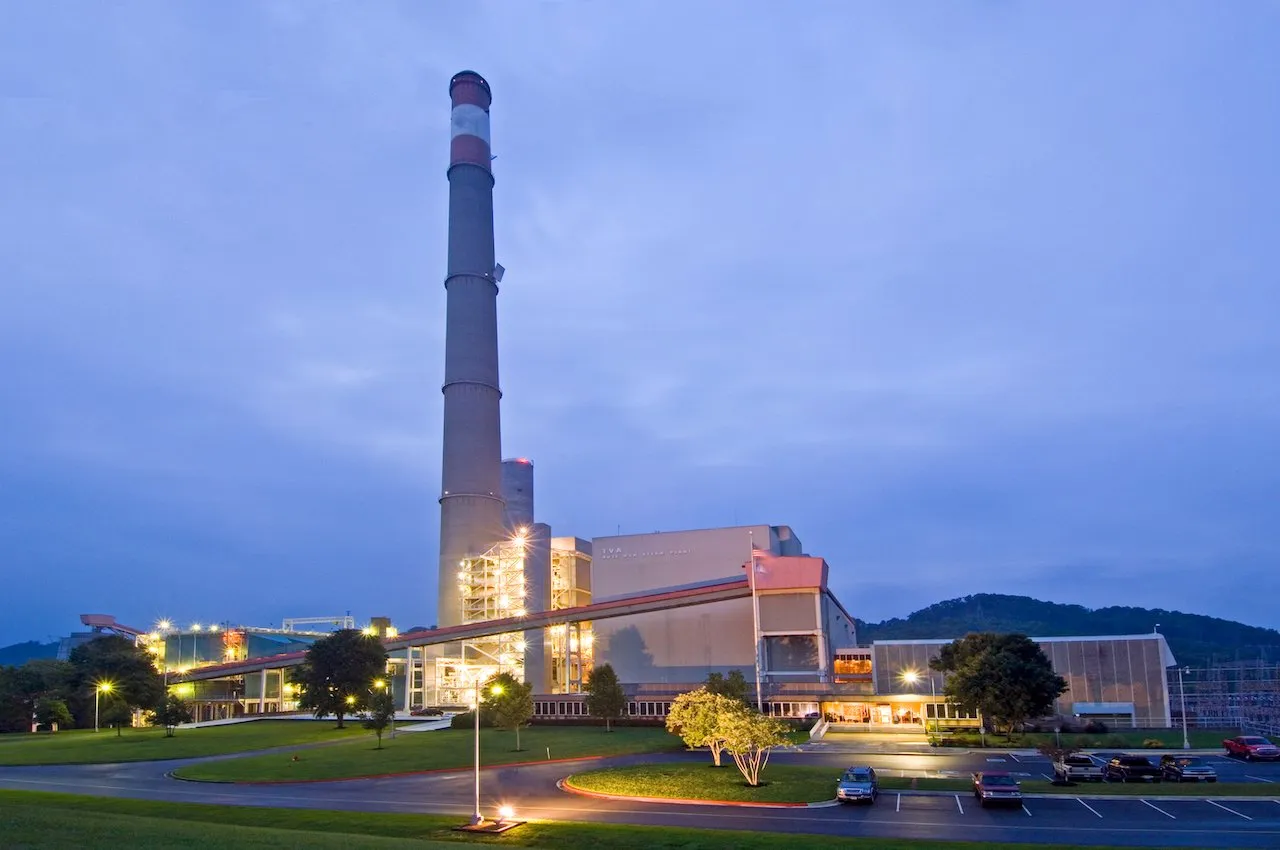Type One Energy Announces Plant at Former TVA Coal Power Plant
by Alex Higginbottom
Type One Energy Group, currently the highest-funded fusion company pursuing Stellarators, has announced plans to build their fusion device at the Tennessee Valley Authority’s Bull Run coal power plant.
So what have they done, and why is it significant?

Type One’s Stellarator concept features helically twisted magnetic coils. ©Type One Energy
What have they done? - A partnership between a fusion company and a traditional utility company
Type One Energy has partnered with the Tennessee Valley Authority and Oak Ridge National Laboratory on ‘Project Infinity’ – a $223m deployment plan for Type One’s ‘Infinity One’ plant.
This involves Type One relocating their headquarters from Wisconsin to Tennessee, and constructing Infinity One at the TVA’s recently closed Bull Run Fossil Plant in Clinton. Bull Run, an 865 MW coal power plant located on a 750 acre site, was decommissioned in December of last year, having operated since 1967.
Type One Energy was spun out from the University of Wisconsin–Madison in 2019. The company has since gained funding from Bill Gates’ Breakthrough Energy Ventures, and was one of eight fusion companies selected by the US Department of Energy to partake in their Milestone-based Fusion Development Program.
Type One specialises in stellarators, which offer notable advantages over tokamaks regarding plasma stability and ease of operation, albeit with recognised construction challenges. Type One aims to mitigate these difficulties by employing 3D printing technology to create their crucial high temperature superconducting magnet coil structures. CEO Christofer Mowry asserted: "Project Infinity will create the world's highest-performance stellarator, providing an excellent platform for a potential long-term fusion research facility."
Why is it impressive? - The first partnership of its kind
This represents the first significant collaboration between a fusion company and a conventional utility.
Over 40 companies are racing to commercialise fusion, but most are ironing out their concept behind closed doors in a purpose-built facility or university lab. Type One Energy – originating from academic roots and until now affiliated with the University of Wisconsin-Madison – is transitioning to a more commercial focus. This shift is evident as they engage with established industry players and local authorities.
Tennessee Governor Bill Lee in a statement said, "Our administration created the Nuclear Energy Fund in partnership with the Tennessee General Assembly to recruit companies like Type One Energy. Tennessee is ready to secure its place as the top state for energy independence, and we are proud to partner with Type One Energy to further that mission and bring hundreds of high-quality jobs and more reliable energy to Tennesseans."

Bull Run Fossil Plant ©TVA Web Team
Why is it important? - A focus on commercialisation
This move by Type One demonstrates a clear pragmatism and focus on commercialisation. Many of the major cost drivers of a fusion power plant – steam turbines, reactor buildings and electrical infrastructure – are shared by many other traditional power plants. By retrofitting an existing plant, many of these costs can be mitigated, resulting in a more compelling commercial offering.
With the transition away from fossil fuels, particularly coal, many such sites are becoming available, and could serve as a key component of fusion deployment. In the UK, the STEP prototype fusion energy plant will be built on the site of a former coal-fired power station in North Nottinghamshire.
A second important aspect of this is the collaboration between Type One Energy, TVA, and ORNL. A public-private partnership such as this sees the government take on a radical new role in fusion: treating it like any other industry with incentives for construction in their region. This reflects a shift in perception where fusion is judged by more traditional metrics such as employment or energy independence. Type One has stated that the company plans on investing over $220m in the region over the next five years, creating 300 high-paying jobs. Bull Run employed around 60.
This kind of cross-party collaboration will be essential for nuclear fusion commercialisation as companies edge toward deployment. Type One is clearly aware of this and is building connections early, potentially serving as a model for other fusion companies and utility companies to follow going forward.
CEO Christofer Mowry highlights the importance of this move, stating, "Successful deployment of Infinity One in East Tennessee, with our partners TVA and ORNL, is a critical milestone in our FusionDirect commercialization program. It is also a watershed moment toward the commercialization of fusion, linking for the first time leaders in the technology, utility, and national laboratory sectors on an actual deployment project.”
"It's exciting to see a project in Oak Ridge with such great potential to advance fusion energy,” said ORNL Director Stephen Streiffer. "The laboratory has been a pioneer in fusion science and technology dating back to the early 1950s. We look forward to applying our institutional expertise and capabilities in working with Type One Energy on the engineering challenges they will be tackling at this new test facility."
Last year at COP 28, then-U.S. climate envoy John Kerry promised that the US would upscale their support for nuclear fusion research and development, which has long been described as the "holy grail" of energy production.
What’s next?
This announcement marks another step towards commercial fusion energy on the grid. Type One have their work cut out – constructing a stellarator on a commercially competitive budget is no easy task – but their willingness to partner with local authorities, and consider paths to commercialisation even before their pilot plant has been constructed, is very promising.
Going forward, it will be interesting to see if other companies follow in their footsteps. For each, the question of deployment will become a consideration sooner or later. Type One has indicated their approach early, but how will others tackle this increasingly relevant problem?
Commonwealth Fusion Systems, also a recipient of Breakthrough Energy Ventures funding that has amassed over $2 billion to date, leads the charge in many ways, but they have still yet to announce a location for their second generation ARC reactor.
Ultimately, it will be the commercial viability of the fusion device and its implementation that will determine which of the 43 competing fusion companies will be successful.
